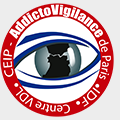
2ème Congrès Européen – EMCDDA 2017

Poppers (alkyl nitrites) are volatile organic solvents used as sexual stimulants or euphoric agents. The use of poppers can lead to adverse effects and poisoning due to their vasodilatory and methemoglobinizing properties.1 In France, the Conseil d’Etat repealed in May 2013 the decree prohibiting the sale or free distribution to the public of poppers, on the grounds that their toxicity was low at usual inhalation doses and that there was no scientific study establishing the risk of substance use disorders (SUD). Thus, the sale of these products is no longer subject to control measures.

Research question
Evaluate the impact of the change in poppers regulation on the occurrence of serious and non-serious adverse events.

Methods
On the one hand, the CEIP-A of Paris examined the database of “Drogues info service” (national-helpline service for individuals facing substance use disorders) by extracting data referring to the term « poppers » or « nitrites » (2009-2015).
On the other hand, we carried out a retrospective analysis of poppers poisoning from patients admitted in Medical and Toxicological Critical Care (MTC) between 2009 and 2016, in order to analyze serious adverse events (defined by life-threatening clinical features). A comparison of the data before and after the change of regulation (CR) is made.
Results
Drogues info service was solicited by 255 people for a request for information on poppers. After CR, there was an upward trend in the number of observations (p = 0.08), with a lower concern for potential risks related to use (-13%) but an increase in adverse effects reported (+32 %). Users are predominantly men (87%) around 30-39 years, but since CR, exposure to poppers is equal in age groups from 10 to 49 years, with a significant decrease in the median age (34 to 31 years; P <0.05). In 26% of cases, a poppers SUD was reported (n = 17/65). Visual disturbance, tracheobronchial irritation, cardiac effect and burn injuries are reported. With CR, poppers SUD increased by 13% (n = 4 before, n = 13 after), with 53% of potential dependence to poppers.
For severe poisoning, 23 patients were admitted to MTC (2009-2016). The number of cases increased since CR. The majority are male (96%), aged 39 years (SD = 8). There was 96% of poly-drug use: alcohol (55%), GHB (45%), medication (27%), cocaine (18%) and cannabis (18%). Poppers were taken primarily in a festive (70%) or sexual (20%) context. For 50% of the poisonings (n = 11/23), the patients had cyanosis and methaemoglobinaemia greater than 3% (average rate = 31 +/- 17%) requiring the use of methylthioninium chloride (81 %). 4 users reported oral ingestion, which is associated with a higher risk of toxicity. One-third of patients reported regular poppers use.

**********************************************************************************************

In France, poppers is the second most experienced psychoactive substance behind cannabis (tobacco and alcohol excluded).2 Epidemiological surveys show that its use has spread to all populations and all age groups (especially among the 40 -49 years). Uses are festive or sexual, occasional, pluri-weekly, sometimes chronic over several years. Substance use disorders, particularly in the context of sexual use, are observed as well as death cases.3,4

Références
- Hunter L, Gordge L, Dargan PI, Wood DM. Methaemoglobinaemia associated with the use of cocaine and volatile nitrites as recreational drugs: a review. Br J Clin Pharmacol. 2011 Jul;72(1):18-26
- Beck F., Richard J.-B., Guignard R., Le Nezet O., SPILKA S., « Les niveaux d’usage des drogues illicites en France en 2014 », Note 2015-01, OFDT.
- ANSM CT des CEIP-A, Janvier 2016 – Rapport d’expertise sur les poppers
- Batisse A, Peyrière H, Eiden C, Courné MA, Djezzar S; Réseau français des centres d’addictovigilance. Use of psychostimulants in a sexual context: analysis of cases reported to the French network of Addictovigilance Centers. Therapie. 2016 Oct;71(5):447-455
Contact
Email: ceip.addictovigilance-paris.lrb@aphp.fr
Phone number: +33 (0)1 40 05 42 70
Adress: Hôpital Fernand Widal, CEIP – Addictovigilance, 200 rue du faubourg Saint Denis – 75010 PARIS

